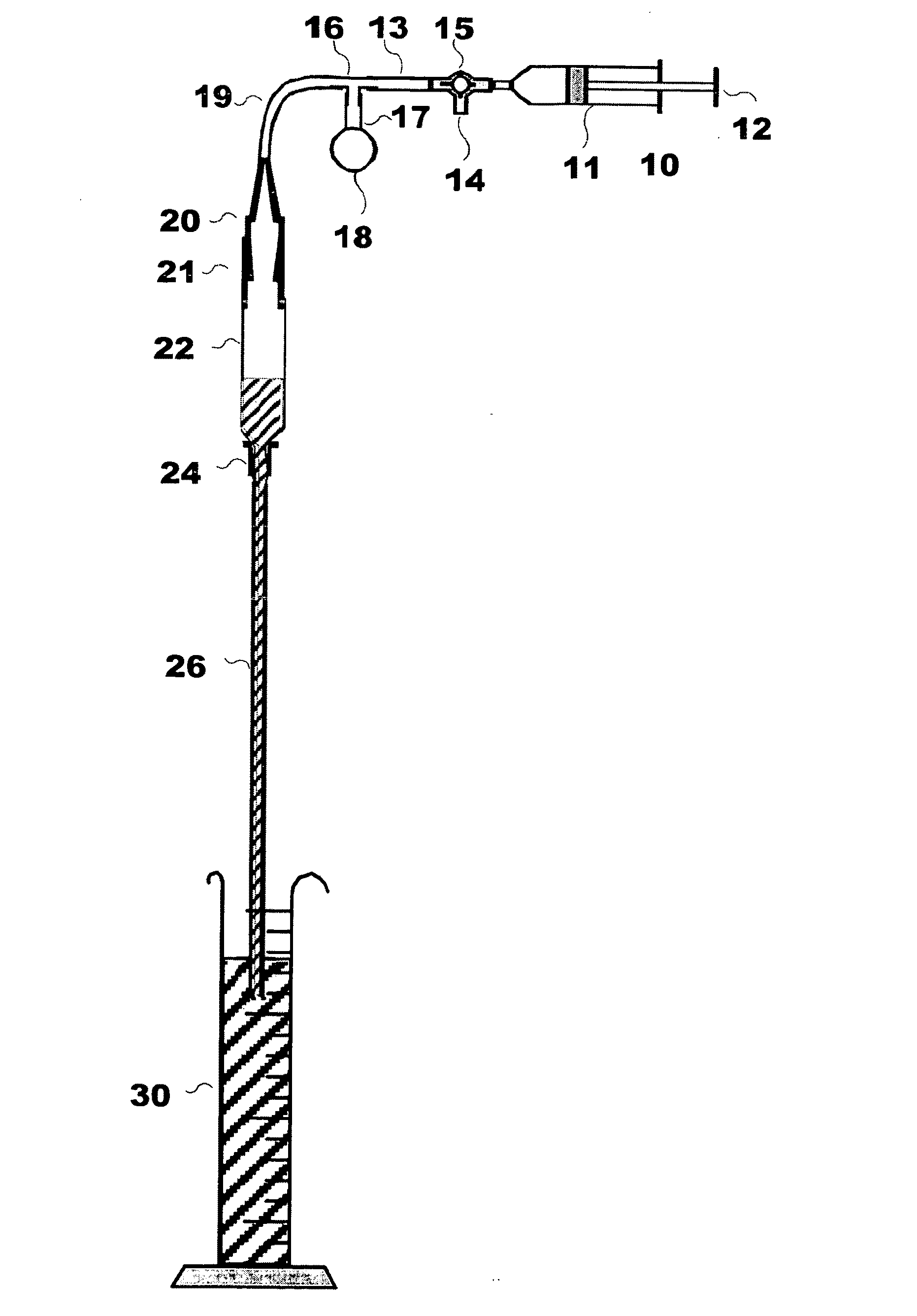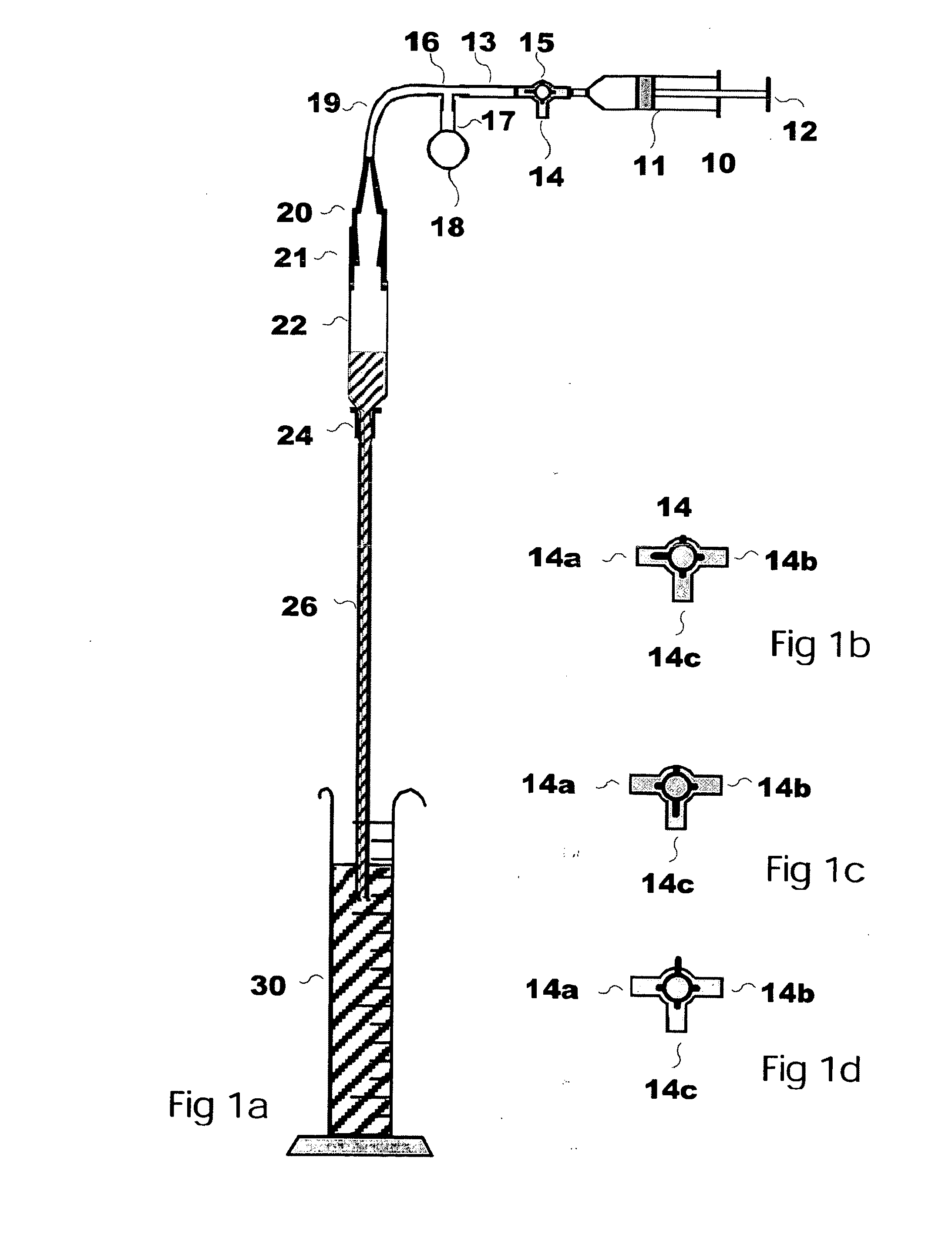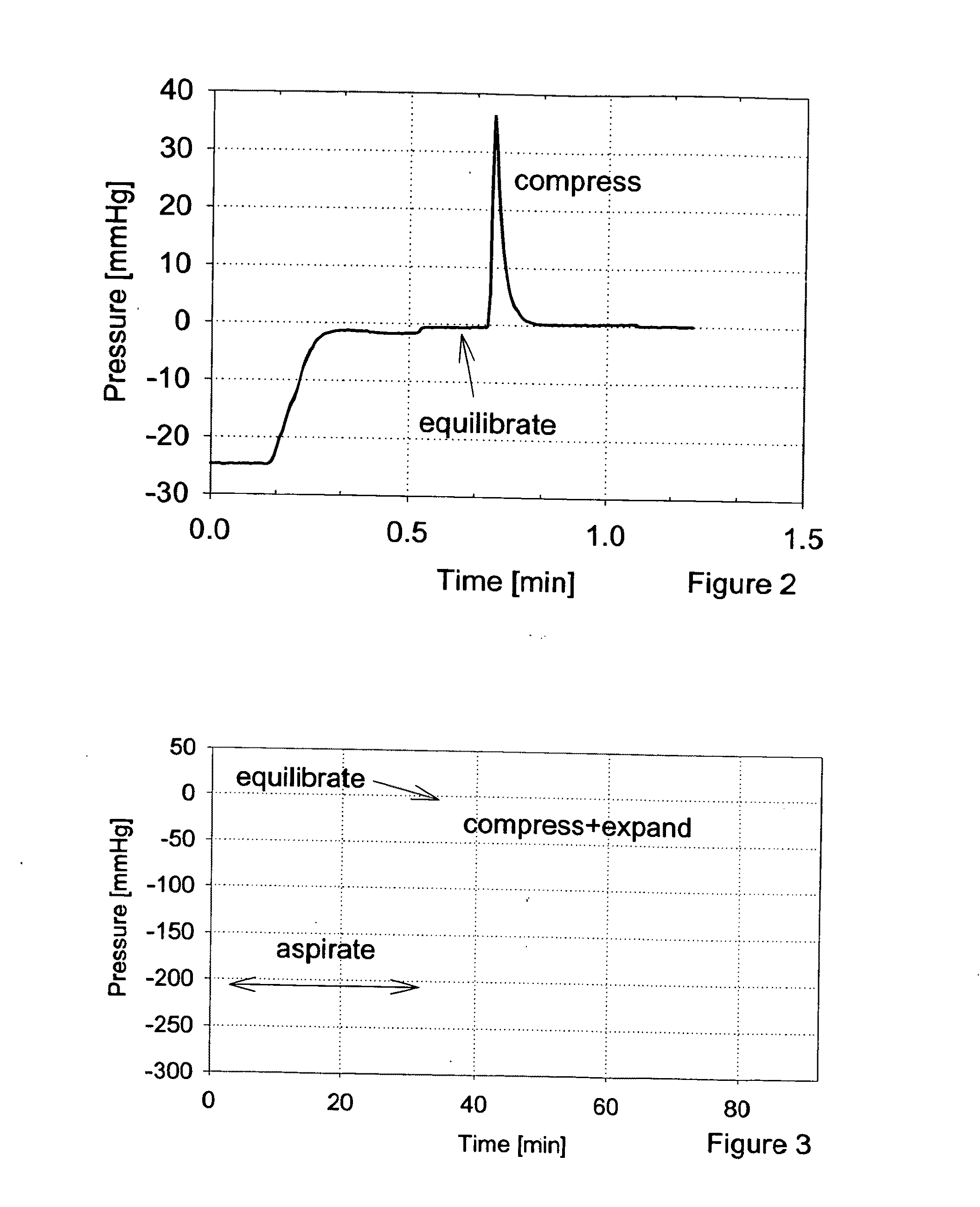[0043]The inventor has found that several new elements may be used to particular
advantage in combination with
Taurolidine and / or Taurultam to prevent clotting and
Biofilm formation or the elements can be combined with other antimicrobial agents. In accordance with the present invention a composition and method is used to prevent the attachment and subsequent growth of
Biofilm on surfaces along with the prevention of clotting in passages of indwelling medical devices. These elements separately and particularly in combination make a more functionally ideal
catheter locking material, which solves the unmet need for a better catheter lock solution.
[0044]One embodiment of the present invention is a gel with thixotropic properties to keep the lock inside the catheter and not spill out during the time interval between uses. This is accomplished by making a
hydrogel matrix as a
drug delivery vehicle containing a biocompatible antimicrobial agent alone or with another active agents, which may be useful for particular purposes. The
hydrogel matrix is biocompatible and, biodegradable in the bloodstream. The matrix can be a hydrogel (e.g.,
pectin,
gelatin, etc), a
protein (e.g., collagen,
hemoglobin, etc), a colloidal substance (e.g.,
serum albumin etc), an
emulsion or other
adjuvant. Preferably, the matrix shall have
structural integrity and be thixotropic while instilled in a catheter during its locking function, which may be for several days to a few weeks.
Thixotropy is a property, which is exhibited by certain gels. It is a property characterized by a
solid or semisolid substance that when shaken, stirred or subject to high shear forces becomes fluid like and can flow and then returns to the semisolid state when the forces and / movement are stopped. Alternatively, the gel could have the properties similar to that of the colloidal dispersion similar to a sauce called “Ketchup” (i.e., tomato sauce), which resists movement, or flow until a high
shear force is imparted to the fluid and then it flows easily. It has been observed that certain thixotropic hydrogel substances can be easily injected into a catheter and the gel does not have the variable velocity exhibited with the parabolic velocity profile of a laminar flowing liquid. Instead the semisolid gel moves into the lumen and travels through it as a cohesive rod-shaped
mass of material. The result is that one can completely fill the catheter with this gel and obtain a uniform concentration without
dilution near the tip without the overfilling and corresponding dumping of lock into the patient.
[0045]This gel is retained in the catheter even when the catheter tip is
flapping (i.e., similar to a flag moving rapidly in the wind) in the
right atrium or subject to density differences or being subjected to moderate pressure variation pulses. However, the gel can easily be withdrawn from the catheter with a
syringe. It has been observed that once a threshold level force is achieved the lock substance flows freely. The tendency to spill out and to mix with blood was greatly reduced during experiments. This substance achieves nearly a 100% lock concentration at the tip and will prevent the mechanical intermixing of blood in the catheter. In practice, the retained lock does not allow blood to enter the catheter. Accordingly, with the absence of blood, no clotting or
thrombus formation will occur within the catheter. Other ingredients may be added to the
gel matrix to provide further functional benefit. The preferred antimicrobial is
Taurolidine, which can be added to the matrix as a micro particle
powder, or encapsulated in liposomes, microspheres, or nanospheres. It should be appreciated that use of a thixotropic gel lock material, many different active agents and drugs including sterileants, lysing agents (such as
Urokinase), imaging enhancers, catheter surface modifiers,
antibiotics and antimicrobial chemicals can be formulated or mixed into the lock to provide additional functional characteristics and even drugs which can be delivered from the catheter lock a through
diffusion mode through the catheter side wall. Mixing gel with a
powder results in a saturated solution of the substance contained in the
powder in the water phase of the gel with the remaining not-dissolved substance acting as a reservoir. As the dissolved substance leaves the gel by
diffusion, additional substance is dissolved from the non-dissolved reservoir space. This is especially useful for long term application when the gel is filled into body cavities, e.g., pockets of implantable devices.
[0057]A further embodiment is that achievement of prophylaxis of device related infection must encompass the
entire life cycle of the device in proper manner to be effective. Although this may seem obvious, it is not being practiced in hospitals and clinics around the world. This embodiment of the invention envisions that effective methods must protect against
contamination and loss of
sterility of the device during storage, while removing the device from its
package, during placement of the device into the patient and while operating and maintaining the device
in vivo. For example, Ventilator tubes for
assisted breathing have a very high
infection rate in the ICUs of Europe and the USA. They account for the highest mortality in the ICU due to nosocomial infection. The numbers of deaths and the cost of treating these infections are quite substantial as ˜60% of patients admitted to the ICU receive Ventilator
breathing tubes. The infection that commonly occurs is called
Ventilator Associated Pneumonia (VAP).
[0059]This embodiment of the invention teaches methods, which reduce the level of viable
bacteria into the lungs during the installation of the device and during use of the device. Prior to inserting the Ventilator tube into the patient, the tube shall be copiously coated with a slippery antimicrobial hydrogel. Some of the antimicrobial gel
coating will be transferred to the trachea as the tube is being inserted into place. Also, during the
insertion procedure, a light spray of antimicrobial solution is directed ahead of the tubes distal end to help coat the trachea surfaces with antimicrobial solution or gel to lessen the amount of viable microbes being pushed into the
airway passages. A further embodiment is to use
Taurolidine as an antimicrobial to further deactivate resulting endotoxins, liberated from the dead or impaired
bacteria.
[0061]Another device also used in the ICU, which has a high risk of
contamination and patient infection, is the
urinary catheter. This device regarding prophylaxis is analogous to the ventilator tube. It is also installed under poor conditions. It must pass deep into the body following a tract that is usually heavily colonized and the results are that most patients with urinary catheters in place for more than 6 days acquire a nosocomial urinary tract infection. Infection related to this device would be much improved by using methods of rigorous infection prophylaxis during
insertion similar to that described for ventilator tubes. Additionally, the device can be protected from Biofilm
colonization by providing an active
delivery system during the
time of use while inserted in the urinary tract.
 Login to View More
Login to View More 


